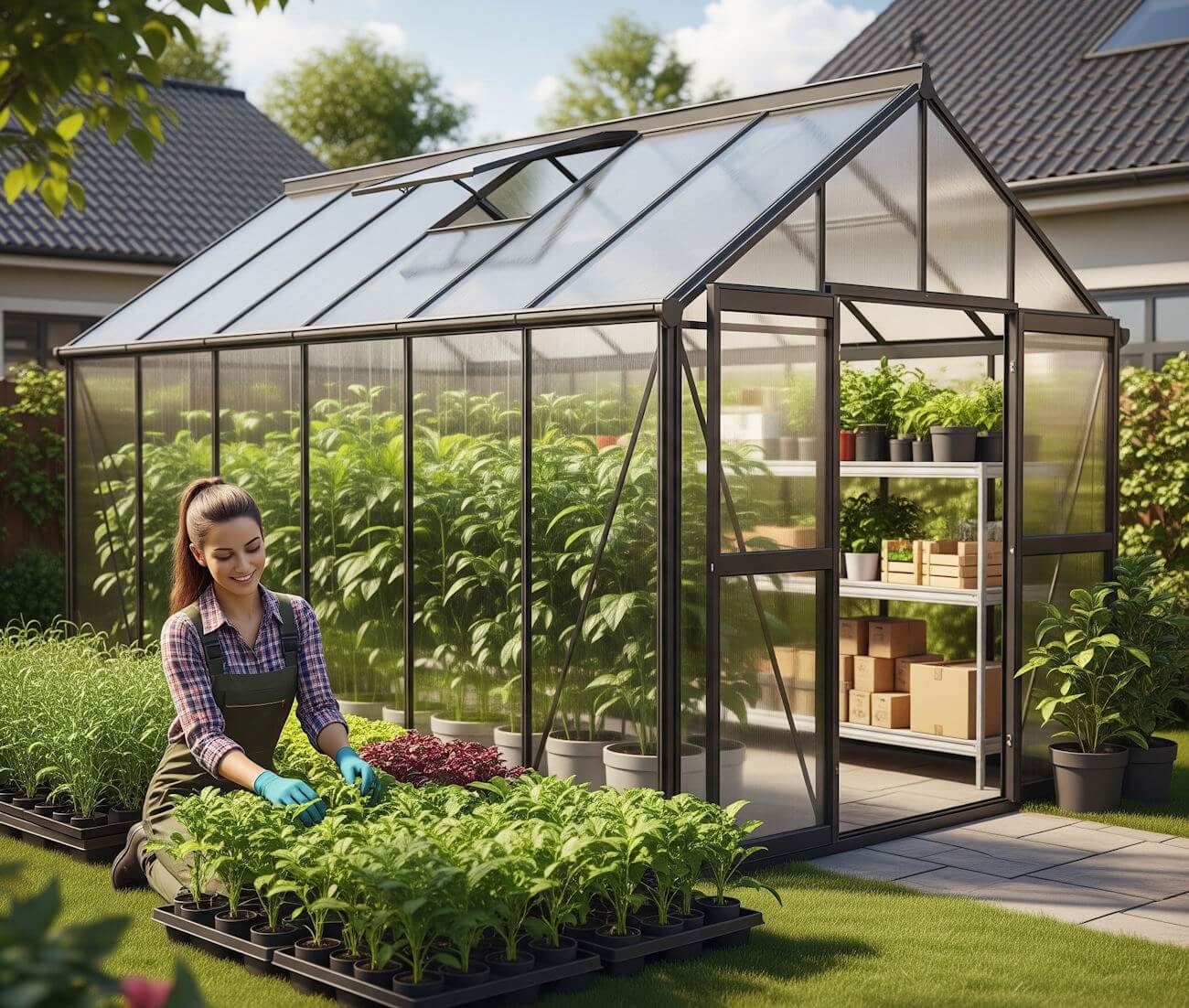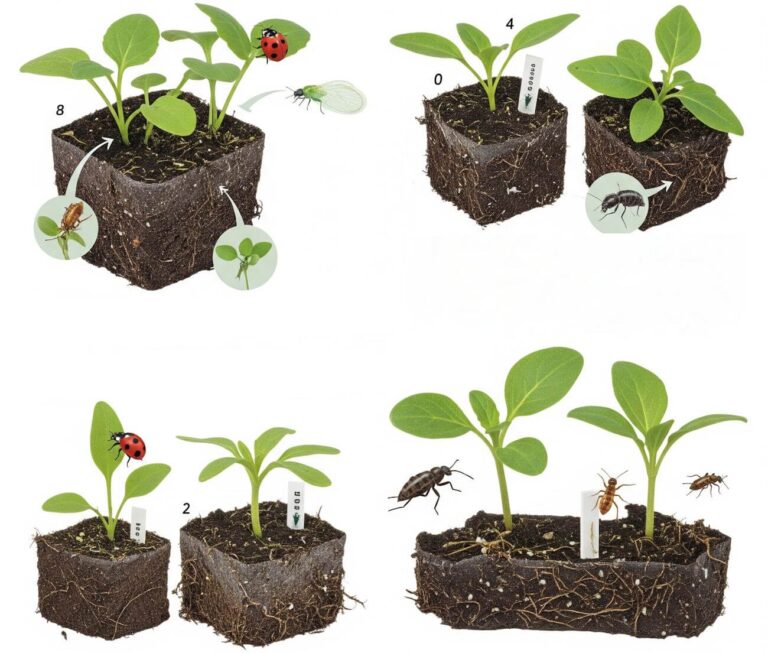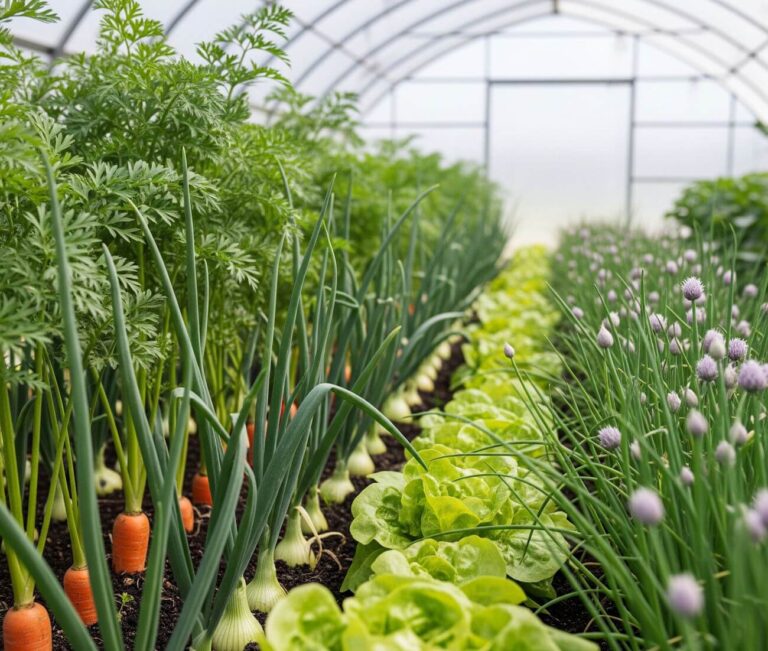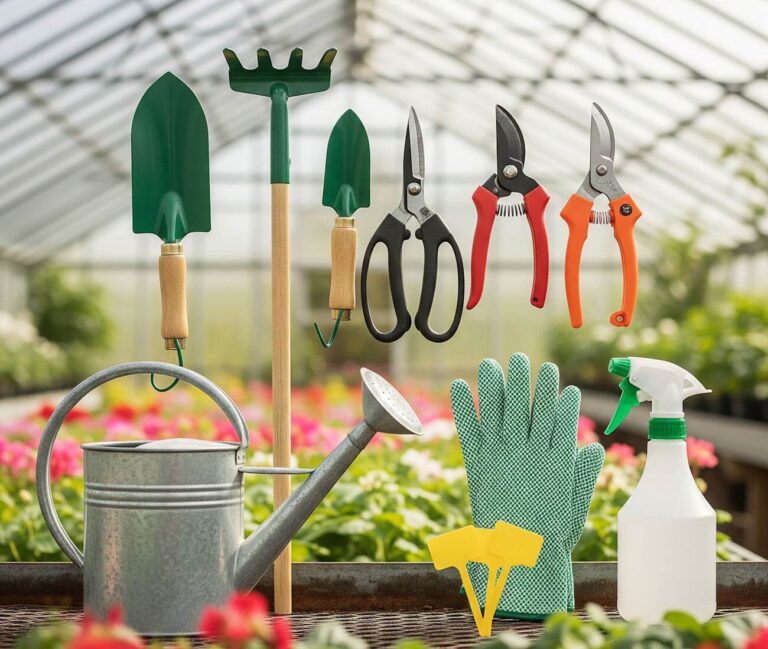Introduction to Greenhouse Profitability
In recent years, the concept of transforming a backyard greenhouse into a profitable venture has gained notable attention. With the evolution of agricultural practices and an increasing inclination towards sustainability, greenhouse farming presents a lucrative opportunity for individuals looking to enhance their income streams. The versatility of a greenhouse allows for year-round crop production, enabling growers to cultivate a diverse range of plants regardless of external weather conditions. This continuity not only boosts productivity but also enhances revenue potential, thanks to the consistent supply of fresh produce.
Another significant advantage of running a greenhouse business is the reduced overhead costs associated with traditional farming methods. Greenhouses often require less land and can be equipped with efficient hydroponics or aquaponics systems, which minimize water usage and maximize crop yield. Additionally, the controlled environment within a greenhouse helps to reduce reliance on pesticides and fertilizers, making it an eco-friendly choice that resonates with the modern consumer. As more people seek out locally sourced and organic produce, the demand for home-grown items continues to escalate, offering greenhouse operators a substantial market to tap into.
This blog post will explore various steps involved in establishing a profitable greenhouse business. Readers will gain insights into selecting the right crops, understanding the essentials of greenhouse design, and managing finances effectively. Furthermore, the upcoming sections will provide valuable suggestions for marketing home-grown produce effectively. By understanding the nuances of greenhouse profitability, aspiring growers can strategically position themselves to succeed in this promising industry. With careful planning and passion for horticulture, what begins as a simple backyard greenhouse can flourish into a thriving business venture.
Assessing Your Greenhouse: Potential for Profit
To successfully transform your greenhouse into a profitable venture, a comprehensive evaluation of your existing structure and its capabilities is essential. Start by assessing the available space within your greenhouse. Different crops require varying amounts of space, and understanding your greenhouse dimensions will help you determine which plants can flourish within it. Additionally, consider the height and layout; vertical farming methods may be applicable to maximize production in confined areas.
Climate control is another critical factor that significantly influences greenhouse profitability. Having a system in place for regulating temperature, humidity, and ventilation can help create ideal growing conditions for a wide range of crops. Investigate the current climate control systems in your greenhouse, identifying if they meet the requirements of the plants you intend to cultivate. Effective climate management will not only enhance crop yield but will also contribute to marketable produce quality.
Assessing the current condition of your greenhouse is equally important. Look for any issues such as structural weaknesses, leaks, or insufficient lighting that may hinder optimal growth. Repairing and updating infrastructure may require initial investment but can result in substantial long-term gains. Moreover, evaluate the soil quality and drainage, as these factors directly affect plant health and productivity.
Finally, understanding local market demands is crucial for calculating the potential output of various crops within your greenhouse. Research which crops are favored in your area; this insight will help you align your production with actual consumer needs. Begin by outlining the types of crops you intend to grow, and estimate potential yields based on your greenhouse capacity. By organzing these considerations, you will be well-placed to maximize profitability and harness your greenhouse’s full potential.
Choosing Profitable Crops to Grow
When considering the transition from a backyard greenhouse to a profitable business, selecting the right crops is essential for maximizing returns. Understanding market trends, local demand, and seasonal variability plays a pivotal role in determining which plants to cultivate. Conducting thorough research on what crops are in demand in your area can provide significant insights and aid in making informed decisions.
Vegetables often remain highly sought after, given their consistent demand in both local markets and grocery stores. Varieties such as tomatoes, cucumbers, and peppers can flourish in greenhouse settings and yield substantial profits. Likewise, herbs, including basil, cilantro, and rosemary, have gained popularity due to their versatility in culinary applications. These crops can often be sold fresh or dried, further expanding profitability.
Furthermore, seasonal considerations cannot be underestimated. Certain crops, like leafy greens, thrive in cooler months, while warm-season vegetables may be more profitable during the summer. By staggering plantings and utilizing techniques such as crop rotation, greenhouse owners can capitalize on extended growing seasons, which ultimately increases yield and revenue.
In addition to traditional offerings, niche markets present lucrative opportunities for greenhouse entrepreneurs. Specialty crops such as organic produce, microgreens, and heirloom varieties cater to health-conscious consumers seeking high-quality options. Engaging with local restaurants or farmers’ markets can also provide avenues to sell these unique products directly to appreciative buyers.
Ultimately, the success of a greenhouse venture relies heavily on aligning crop selection with market demands and trends. By focusing on popular vegetables, herbs, and even niche offerings, greenhouse operators can effectively turn their passion for horticulture into a sustainable and profitable business model.
Marketing Your Greenhouse Products
Successfully marketing greenhouse products requires a well-rounded strategy that emphasizes branding, community engagement, and digital presence. Establishing a strong brand identity is essential. This comprises not only a memorable business name and logo but also a cohesive message that communicates the unique value of your produce. Highlighting attributes such as organic growing practices or local sourcing can create a compelling narrative that resonates with environmentally conscious consumers.
Leveraging social media platforms is another powerful tactic for marketing your greenhouse products. Through visually appealing content that showcases your produce, you can engage potential customers and keep your current audience informed about new offerings. Consider sharing behind-the-scenes glimpses of your greenhouse operations or creating instructional videos on using your products. Platforms like Instagram and Facebook allow you to reach a broader audience and connect with them on a more personal level.
Developing a professional website can serve as a hub for your marketing efforts. It should include information about your products, pricing, and purchasing options, along with an engaging blog that can enhance your SEO. Consider adding an e-commerce section to your site for direct sales, which can be complemented by engaging newsletters and promotions aimed at building a loyal customer base.
Community engagement is vital for local greenhouse operations. Participating in farmers’ markets allows for direct interactions with customers, helping to build trust and encourage word-of-mouth marketing. Additionally, establishing relationships with local restaurants or grocery stores can open avenues for bulk sales. Approaching these establishments with samples of your products can demonstrate quality and pave the way for ongoing partnerships. Furthermore, subscription services for regular produce deliveries can create a steady income stream while catering to consumers seeking convenience.
Legal and Regulatory Considerations
When transitioning from a personal greenhouse to a business venture, it is imperative to navigate the various legal and regulatory landscapes that govern such operations. First, obtaining the necessary permits is essential. Depending on your location, you might need specific permits for agricultural activities, which can vary widely from one municipality to another. Many counties and states require a business license, which is often a prerequisite for operating any commercial entity. Researching local regulations will help ensure compliance and facilitate a smooth startup process.
Zoning laws also play a critical role in determining whether you can operate a greenhouse business on your property. Zoning regulations dictate the types of businesses permitted in specific areas, ensuring they align with community planning goals. It is advisable to consult your local zoning office or website to ascertain whether your property is zoned for agricultural use or if any variances might be required.
Moreover, agricultural regulations will significantly influence your operations, particularly if you plan to sell plants or produce directly to consumers. Familiarizing yourself with these rules can help mitigate any legal complications. Additionally, if your business involves the sale of food products, compliance with food safety standards is paramount. These regulations are enforced by health departments to ensure that the products being sold are safe for public consumption. It is wise to attend workshops or seminars on food safety to guarantee that you adhere to best practices.
In conclusion, a thorough understanding of the legal and regulatory considerations associated with operating a greenhouse business not only ensures compliance but also sets a solid foundation for future growth and success. Failure to address these critical areas can result in costly setbacks, making it essential to approach this aspect of your venture with diligence and care.
Understanding Financials: Budgeting and Pricing
Embarking on the journey of transforming a greenhouse into a profitable venture necessitates a comprehensive understanding of financial management, particularly in the domains of budgeting and pricing. The first step involves outlining initial start-up costs, which can include expenses such as purchasing the greenhouse structure, necessary equipment, seedlings, and soil. It is imperative to compile a detailed budget that reflects these costs to gauge the total investment required. This allows prospective greenhouse owners to make informed decisions and secure appropriate financing if necessary.
Once the initial investment is established, ongoing operational expenses must be identified. This may consist of utilities, such as water and electricity, labor costs, and maintenance. Keeping accurate and detailed records of these expenses is essential for effective budgeting. Implementing basic accounting principles will enable you to monitor your income and expenses efficiently, ensuring that the greenhouse operates within its financial means.
Setting prices for products is another critical component of financial management. Analyzing market trends, understanding the target audience, and evaluating competitor pricing will aid in determining a fair yet profitable pricing strategy. Consider adopting cost-plus pricing, where you calculate the total cost of production and add a predetermined profit margin. This approach ensures that all costs are covered while also generating sufficient profit.
In addition to effective pricing strategies, managing cash flow is vital to the success of your greenhouse business. Establishing a cash flow projection can help anticipate revenue and expenses, allowing for informed financial decisions. Reinvesting profits back into the business, whether for expanding operations or enhancing quality, serves as a growth strategy that can establish long-term viability in the marketplace.
Sustainable Practices for Long-term Success
In today’s competitive market, adopting sustainable practices within greenhouse operations has become imperative not only for environmental stewardship but also for enhancing the long-term viability of a business. One of the foundational methods is organic farming, which promotes soil health and biodiversity. By eschewing synthetic fertilizers and pesticides, greenhouse operators can cultivate produce that appeals to the growing segment of health-conscious consumers. Embracing organic methods not only results in higher quality produce but also attracts customers who are willing to pay a premium for sustainably grown products.
Another critical component to consider is integrated pest management (IPM). This holistic approach focuses on minimizing pest impact while reducing reliance on chemical interventions. Techniques such as crop rotation, habitat manipulation, and the introduction of beneficial insects enable greenhouse owners to manage pests in a more environmentally friendly manner. Implementing IPM not only protects the integrity of the crops but can also enhance customer trust and loyalty through the assurance of safe, sustainable produce.
Water conservation is another vital aspect of sustainable greenhouse management. Employing systems like drip irrigation, rainwater harvesting, and moisture monitoring can significantly reduce water usage while promoting optimal growing conditions. Efficient water management practices not only lower operational costs but also contribute to the preservation of this critical resource, resonating well with environmentally conscious consumers.
Additionally, energy efficiency is essential for maintaining a sustainable greenhouse. Utilizing renewable energy sources such as solar panels or wind turbines, alongside energy-efficient lighting and climate control systems, can substantially decrease operational costs while decreasing carbon footprints. This commitment to sustainability can be a strong marketing point, enhancing brand image and fostering customer loyalty. Overall, implementing these sustainable practices positions greenhouse ventures for long-term success in both profitability and environmental responsibility.
Technology and Tools to Enhance Production
In the quest to transform a backyard greenhouse into a profitable business, understanding and implementing the latest technologies and tools is paramount. These advancements not only increase efficiency but also significantly boost productivity and profitability. One of the most critical components is the automation system, which can streamline many greenhouse processes. Automated systems can handle everything from seed germination to harvesting, allowing growers to minimize human error and reduce labor costs. For instance, automated irrigation systems can ensure plants receive the optimal amount of water based on real-time data, conserving resources while promoting healthy growth.
Another vital aspect of greenhouse management is climate control technology. With advanced climate control systems, growers can maintain ideal conditions for plant growth throughout the year. These systems can manage temperature, humidity, and CO2 levels, ensuring that plants thrive regardless of external weather conditions. Implementing such technology not only enhances crop quality but also extends the growing season, allowing for additional harvest cycles and increased profit margins.
Irrigation advancements also play a crucial role in maximizing greenhouse production. Innovations such as drip irrigation and fogging systems ensure that water is delivered directly to the plant roots efficiently, which can reduce water waste significantly. Additionally, technologies that monitor soil moisture levels help in scheduling irrigation precisely when plants need water, further optimizing resource use.
Monitoring plant health is another essential element that modern technology addresses. Sensors and imaging technology can detect plant diseases and nutrient deficiencies early, allowing for timely interventions. This proactive approach can lead to healthier crops and higher yields. Investing in these technologies not only increases production efficiency but also enhances the quality of the produce, ultimately contributing to a thriving greenhouse business.
Real-life Success Stories and Case Studies
Turning a backyard greenhouse into a profitable business is not merely a dream but a reality for numerous individuals who have successfully navigated this journey. These success stories serve as compelling narratives that illustrate the various avenues one can explore in the world of greenhouse entrepreneurship. For instance, Jane Doe, a former teacher, transformed her passion for gardening into a thriving online business that specializes in organic herbs and vegetables. Starting with a modest greenhouse in her backyard, Jane utilized social media platforms to market her products, gradually building a loyal customer base. She overcame initial challenges, such as pest management and fluctuating weather, by researching sustainable practices and employing integrated pest management strategies. This pivot not only improved her yields but also enhanced the quality of her produce, attracting more customers.
Similarly, John Smith opened a small-scale flower business from his greenhouse, focusing on providing unique floral arrangements for events. His strategy involved tapping into the local market by collaborating with event planners and participating in farmers’ markets, which helped him gain visibility. John’s experience underscores the importance of networking and building relationships within the community to foster business growth. Over time, he expanded his product line to include potted plants and started a subscription service, which ensured a steady income stream.
These examples reflect a common theme: adaptability and resilience. Entrepreneurs engaging in greenhouse ventures often face hurdles such as seasonality and product diversification. However, many have turned these challenges into opportunities by diversifying their offerings or adapting their business models. By sharing these success stories, aspiring greenhouse entrepreneurs can draw inspiration and learn practical strategies to emulate similar feats. The potential for profit is indeed promising when guided by real-world experiences and a willingness to innovate.







